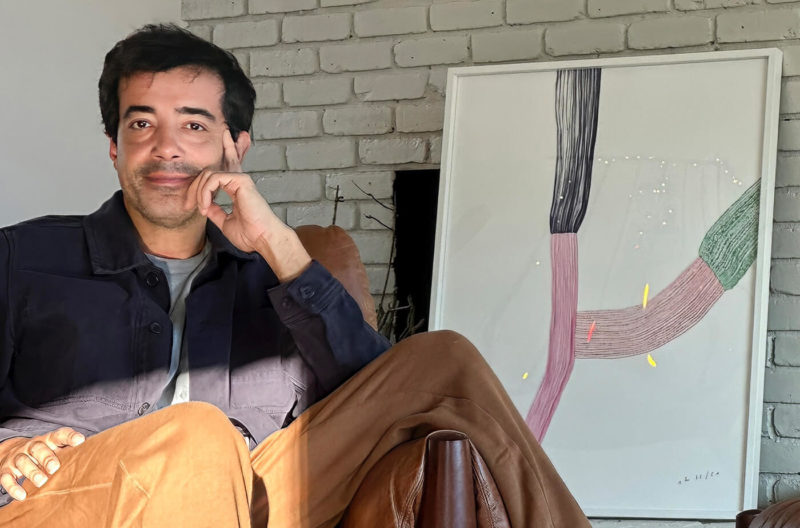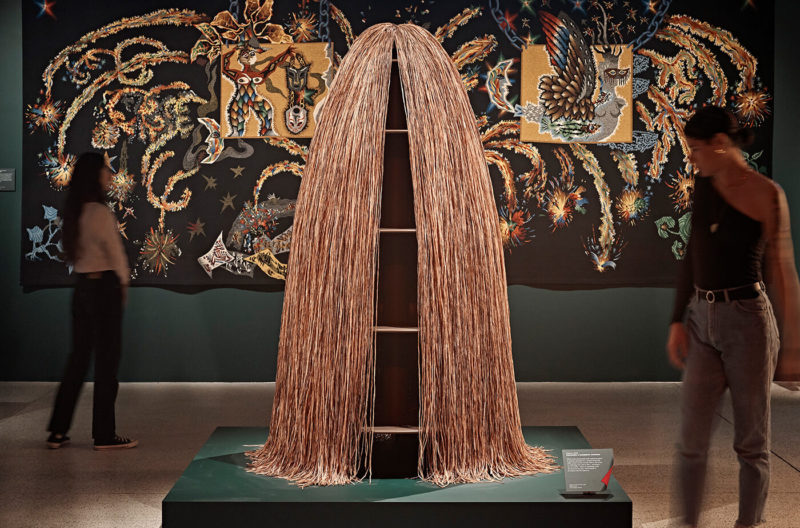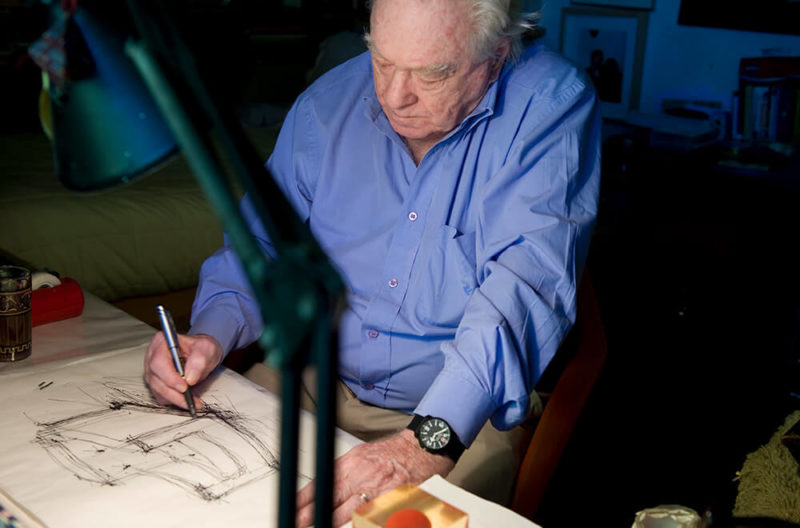Paris Dispatch / January 2023
Jorge Zalszupin and Haegue Yang - two shows to catch before the end of the week.
Gokelaere & Robinson: ‘Brazilian Design- A Passion for Jorge Zalszupin’
Until 4th February 2023
Galerie Chantal Crousel: ‘Haegue Yang: ‘VIPS’s Union Petite’
Until 4th February 2023
This Paris January Dispatch celebrates legacy and creative identity. At Gokelaere & Robinson a charming exhibition conjures a living room and office space featuring the work of the late Polish-Brazilian modernist designer Jorge Zalszupin. Over in the Marais at Galerie Chantal Crousel, South Korean artist Haegue Yang has assembled furniture pieces belonging to 29 Parisian VIPs to reflect on what our favourite piece of furniture expresses about how we wish to be perceived.
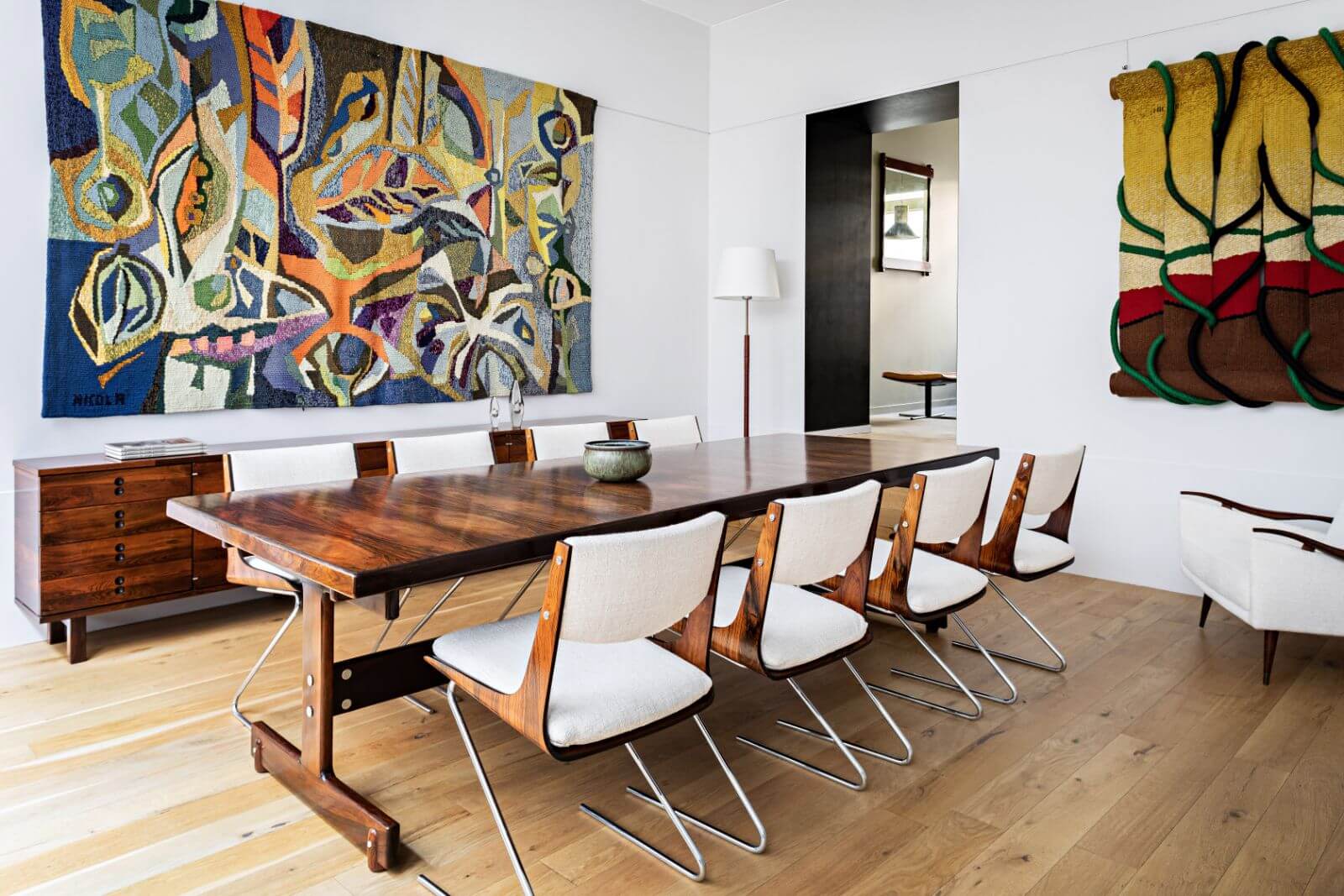
Exhibition view, ‘Jorge Zalszupin’, Gokelaere & Robinson, Paris (2022-23)
COURTESY: Gokelaere & Robinson / PHOTOGRAPH: © Yann Deret
Brazilian Design- A Passion for Jorge Zalszupin
Gokelaere & Robinson
To mark the centenary of Polish-Brazilian designer Jorge Zalszupin’s birth, Gokelaere & Robinson has mounted a trilogy of exhibitions dedicated to his work and legacy.
In March, the gallery organised a two-week-long show at the Woning Van Wassenhove, a modernist villa designed in 1974 by Belgian architect Juliaan Lampens for Albert Van Wassenhove, a language teacher and art and architecture afficionado, in Sint-Martens-Latem, in East Flanders. Resembling a closed bunker from one side and boasting glass-fronted openness to nature on the other, the brutalist house served as a complementary setting for Zalszupin’s furniture, characterised by geometric lines and organic shapes. Then in April-May, Gokelaere & Robinson held a second iteration in its seaside space in Knokke, Belgium. This third part of the trilogy presents Zalszupin’s furniture in the company of other Brazilian creatives in the gallery’s Parisian space. The show has been conceived to evoke a living room and an office environment in which Zalszupin’s sensual wooden pieces take centre stage.
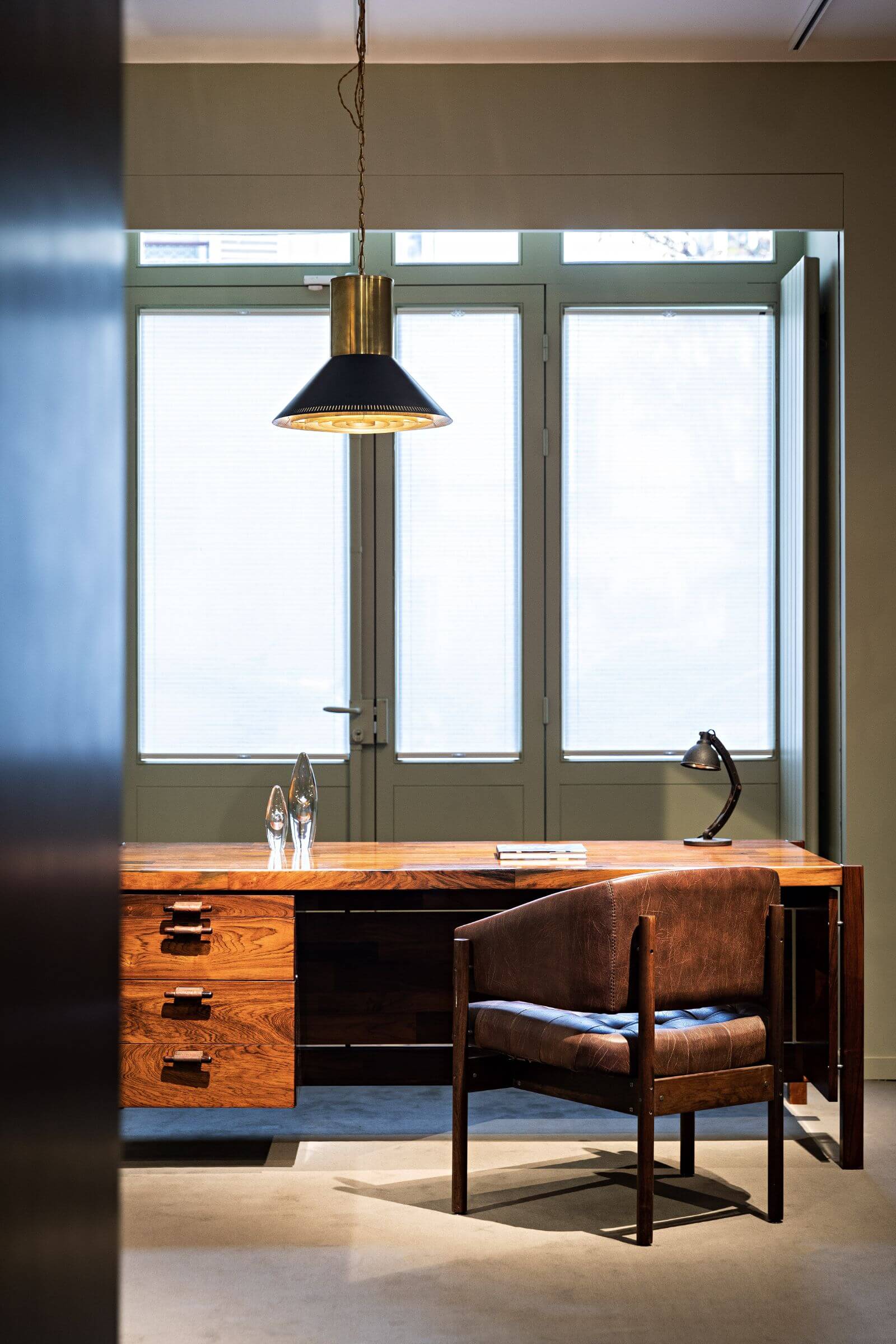
Jorge Zalszupin, ‘Ambassador desk’, circa 1960
COURTESY: Gokelaere & Robinson / PHOTOGRAPH: © Yann Deret
Born in Warsaw as Jerzy Zalszupin, Zalszupin (1922-2020) fled Poland in 1940 to escape the invasion of Nazi Germany and studied architecture in Bucharest before moving to France to work on the post-war reconstruction of Dunkirk. Fascinated by Brazil, he left for the Latin American country in 1949, first arriving in Rio de Janeiro before settling in São Paulo where he initially worked for his compatriot Lucjan Korngold.
In 1953, Zalszupin obtained Brazilian nationality, changing his first name to Jorge, and was able to sign his own projects after opening his agency, Escritorio Tecnico Prumo, in 1958. He also started a furniture company, L’Atelier, and worked with Oscar Niemeyer on furniture pieces for the new administrative capital, Brasilia, such as yellow armchairs for rooms in the Supreme Federal Court.
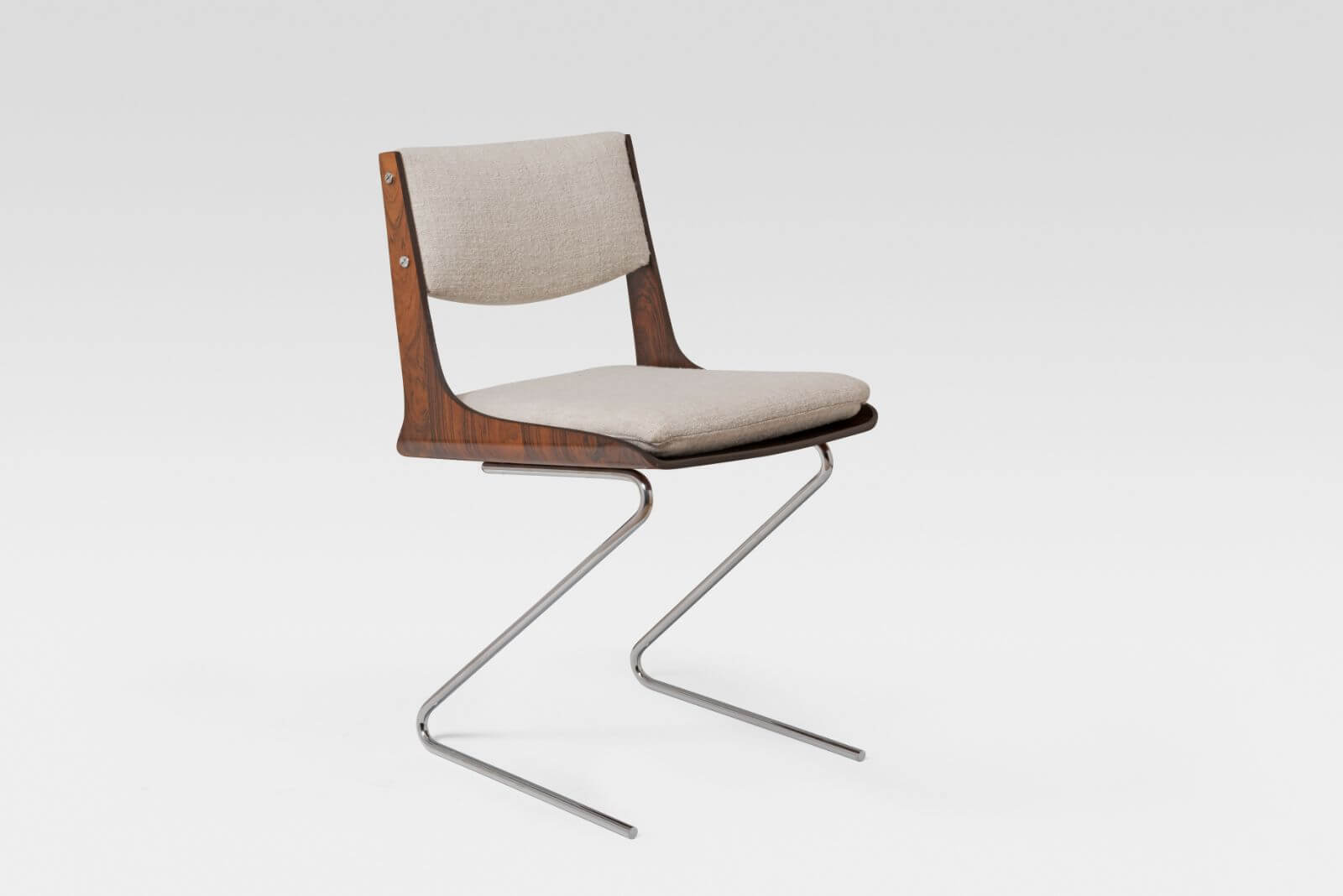
Jorge Zalszupin, ‘Kanguru’ chair, circa 1960
COURTESY: Gokelaere & Robinson
The pieces on view at Gokelaere & Robinson were manufactured by L’Atelier, which Zalszupin founded in 1959 in order to produce small series of furniture. A set of eight ‘Kanguru’ chairs from around 1966 immediately catch the eye. Their distinguishing feature is the Z-shape of the steel legs zigzagging down from the rosewood seat upholstered in white fabric. Curiously, the ensemble is arranged around a rosewood dining table by Danish architect Finn Juhl because the Zalszupin table envisaged for the exhibition was sold before opening.
Also in the living room space is a ‘Jacaranda’ sideboard (around 1960), made from Jacaranda wood – which, like Brazilian rosewood, is now an endangered species – belonging to L’Atelier’s modular furniture line. Highly innovative at the time, the furniture line included sideboards with modules that varied according to a client’s needs. Adorning the wall above it is a vibrant, tropical tapestry, ‘Trópico azul’ (1960), by twentieth-century Brazilian artist Norberto Nicola.
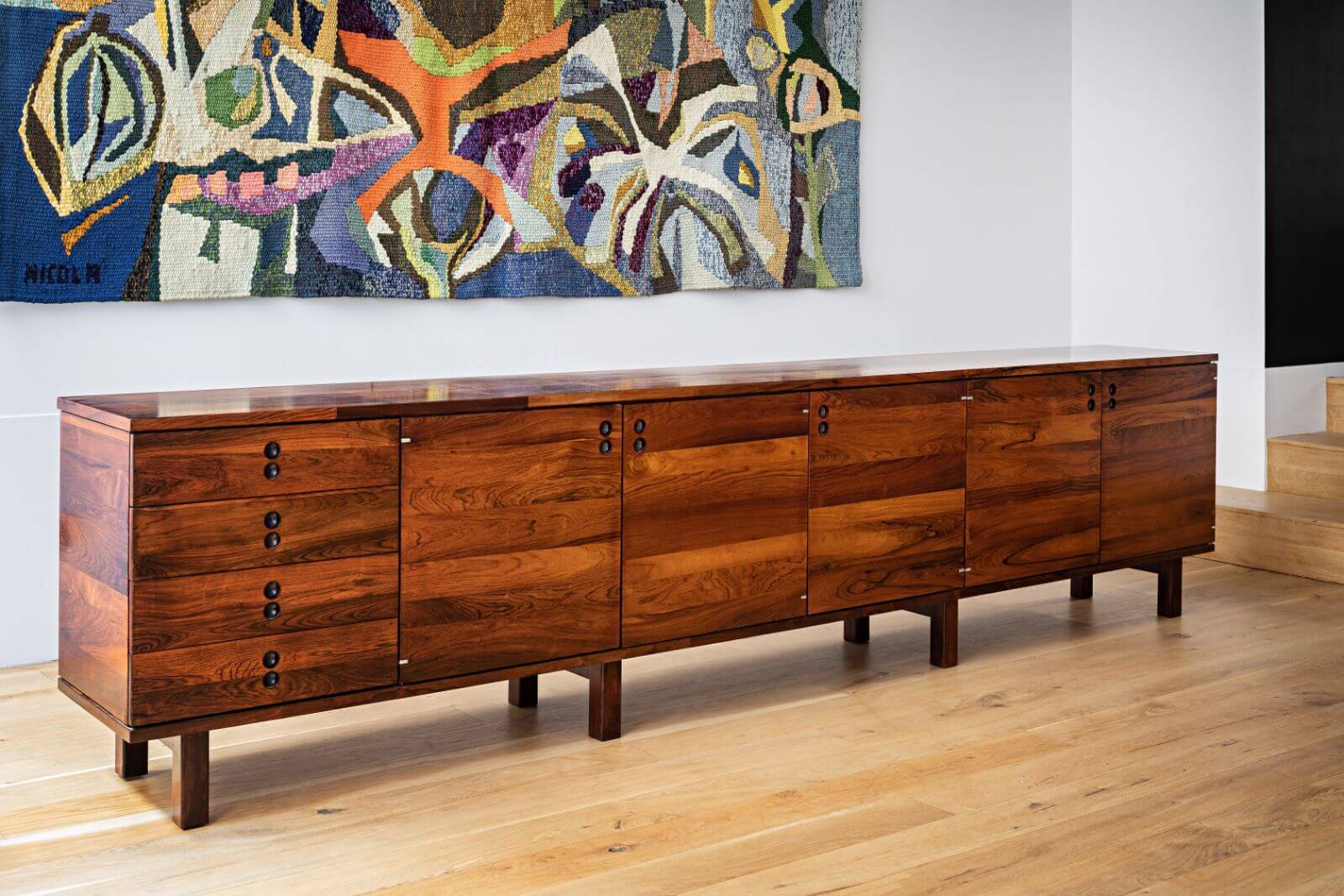
Norberto Nicola, ‘Trópico azul’ tapestry, circa 1960; Jorge Zalszupin, ‘Sideboard’, circa 1960
COURTESY: Gokelaere & Robinson / PHOTOGRAPH: © Yann Deret
Nicola pioneered an unprecedentedly ambitious approach to contemporary textile art in Brazil. Another of his tapestries, ‘Meandros’ (1987) – a lush landscape in gold, red and brown panels intersected with twisting green and black ropes – echoes with the undulating armrests of the ‘Senior Armchair’ (1959).
In the adjacent room is the majestic ‘Ambassador desk’ (circa 1960), again made from rosewood, beautiful veneers and leather finishings on the drawer knobs, and the ‘Mucki Bench’ (1958), made from ribbons of wood, on which is displayed a vase of hydrangeas, the gallery’s catalogue on Zalszupin and a lamp.
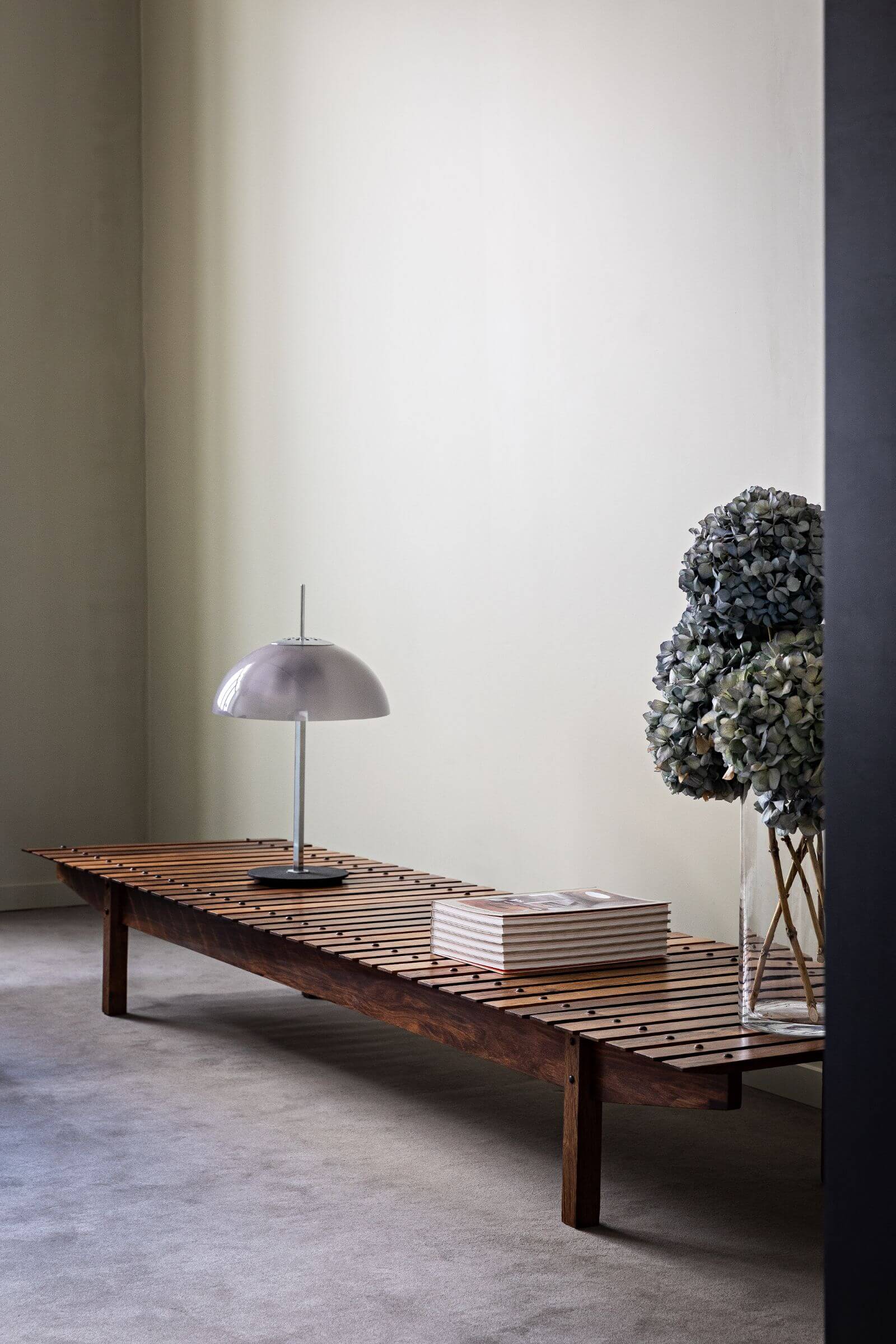
Sergio Rodrigues, ‘Mucki Bench’, 1958
COURTESY: Gokelaere & Robinson / PHOTOGRAPH: © Yann Deret
What shines through is Zalszupin’s refined and graceful style, which drew inspiration from Scandinavian modernism, Brazilian culture and local woods to offer something distinct and unique.
Haegue Yang: ‘VIP’s Union Petite, 2001/2022’
Galerie Chantal Crousel
South Korean artist Haegue Yang is treated to double exposure at Galerie Chantal Crousel this autumn/winter. Straight after an exhibition displaying her new collages, the artist is having a second show but, this time, it does not feature her own works but chairs owned by VIPs in Paris. Yang first presented the concept of ‘VIP’s Union’ in Berlin in 2001. She views it as a “collaborative conceptual artwork” that involves her borrowing chairs and tables from individuals considered “very important” in their particular field. For each iteration, she selects people from the city where the exhibition is, so in this case, Paris, and asks them to each lend a piece of furniture, either from their home or office, for the duration of the show. Haegue then arranges the offerings according to material, style or colour, creating temporary synergies between them.
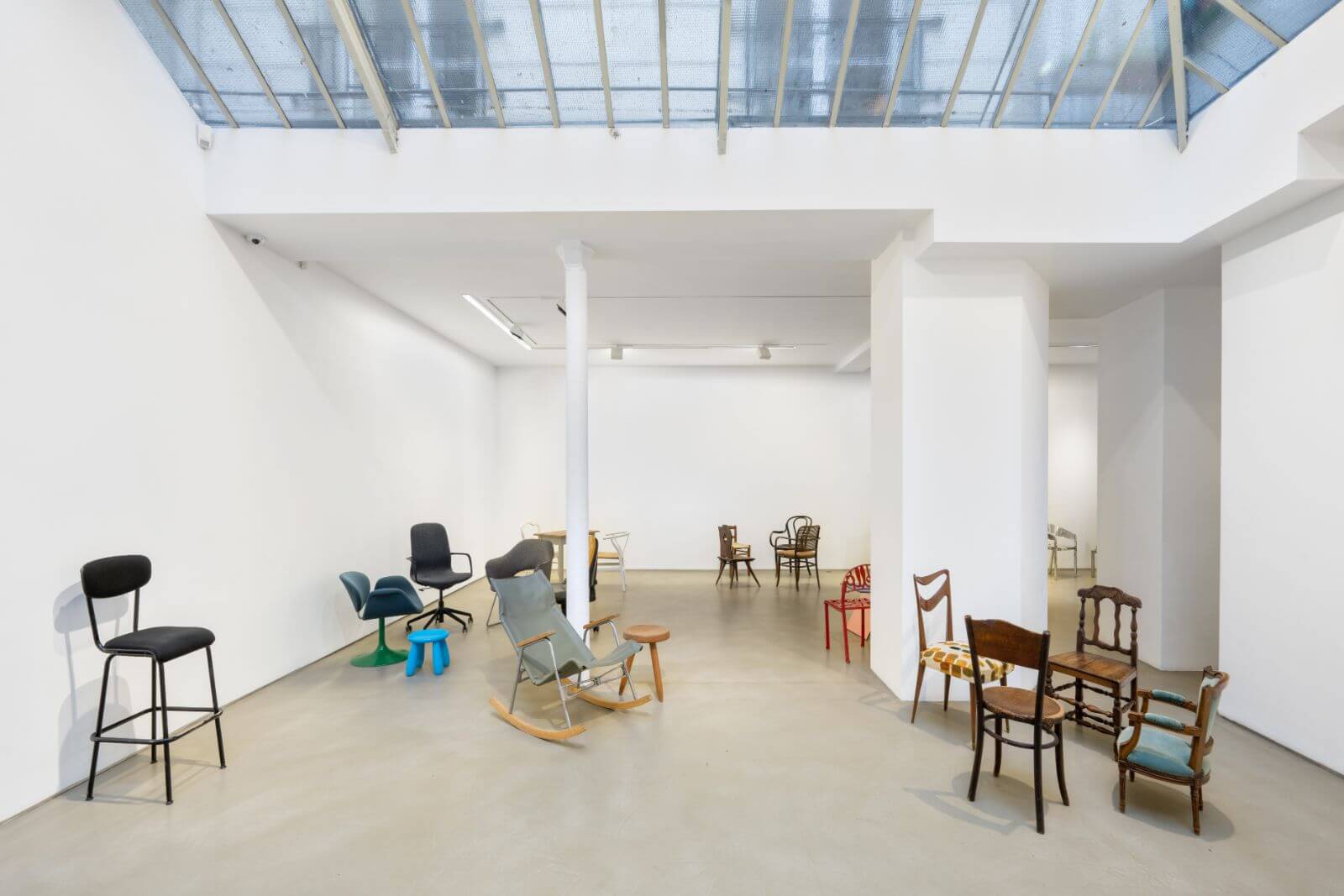
Exhibition view, ‘VIP’s Union Petite, 2001/2022’, Galerie Chantal Crousel, Paris (2022-23)
COURTESY: Haegue Yang & Galerie Chantal Crousel / PHOTOGRAPH: Martin Argyroglo
Following previous editions in venues such as Kunsthaus Graz in Austria and Museum of Contemporary Art Antwerp, this edition extends across an entire room in the gallery. On first impressions, the scenography seems tenuous. But on closer inspection, and with the help of the print-out, a sense of gathering between some of the pieces slowly emerges. Near the entrance, for instance, are four wooden chairs, arranged as if they are around an invisible bridge table. The elegant chair at the top left, with two wavy shapes on the back and a seat upholstered in a cream fabric with bright motifs, belongs to the French doyenne of acting, Catherine Deneuve. The round-seated chair to its right, meanwhile, belongs to the fashion designer and arts patron Agnès b.
Another noteworthy pairing on view is the black-legged, wooden chair belonging to Centre Pompidou president Laurent Le Bon (a model that’s refined yet serious) besides a brown sculpture evoking two interlocking chairs by Didier Faustino, the French-Portuguese artist and architect.
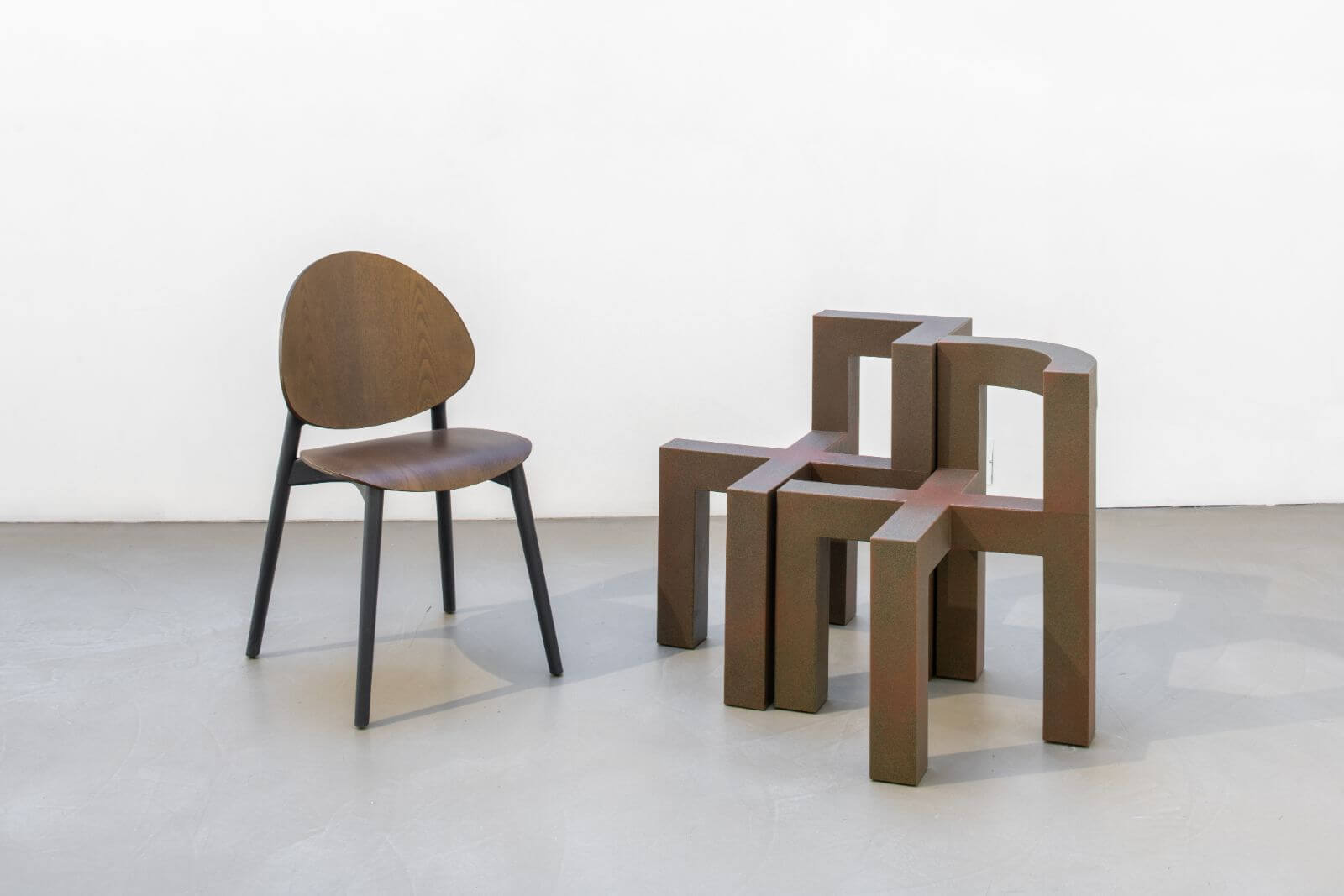
Exhibition view, ‘VIP’s Union Petite, 2001/2022’, Galerie Chantal Crousel, Paris (2022-23)
COURTESY: Haegue Yang & Galerie Chantal Crousel / PHOTOGRAPH: Martin Argyroglo
Several architects have included pieces they designed themselves: there’s Jean Nouvel’s tapered silver ‘So-So’ chair edited by Emeco next to Dominique Perrault and Gaëlle Lauriot-Prévost’s BNF chair made from a nickel-plated metal structure and backrest in Doussie veneer. Each chair conveys something about what its owner wishes to communicate about their identity. For instance, Audrey Azoulay, the director-general of UNESCO, has contributed a grey, chrome-legged office chair while DJ Pedro Winter has provided a red chair, the word “hello” written into its back.
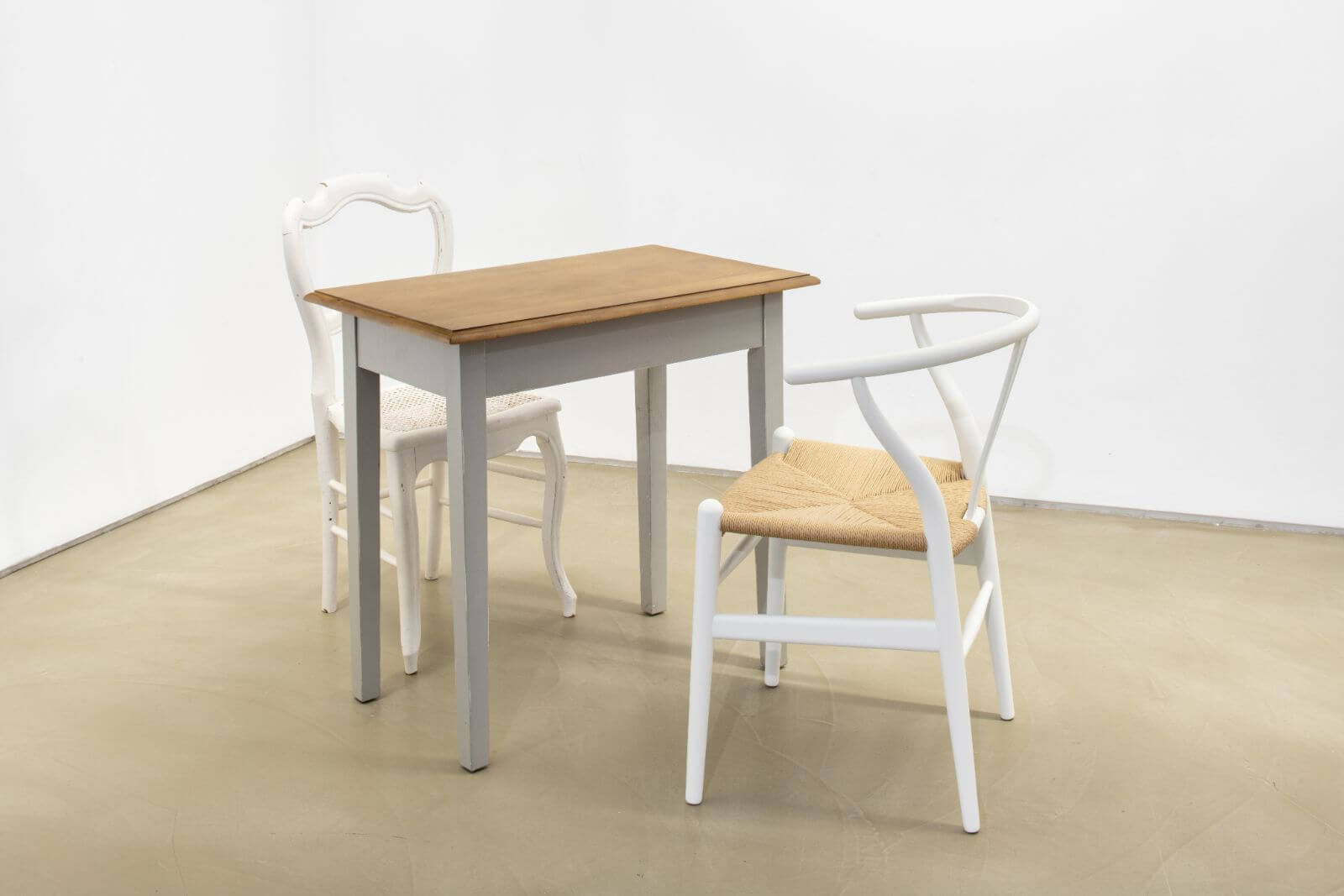
Exhibition view, ‘VIP’s Union Petite, 2001/2022’, Galerie Chantal Crousel, Paris (2022-23)
COURTESY: Haegue Yang & Galerie Chantal Crousel / PHOTOGRAPH: Martin Argyrogl
‘Brazilian Design – A Passion for Jorge Zalszupin’ at Gokelaere & Robinson, 34 Rue de Penthièvre, 75008 Paris.
‘Haegue Yang: VIP’s Union Petite, 2001/2022’ at Galerie Chantal Crousel, 10 Rue Charlot, 75003 Paris




